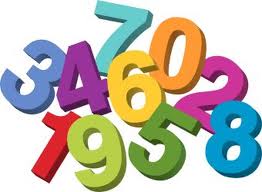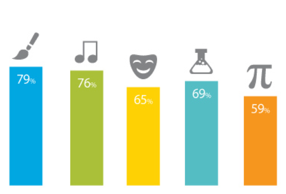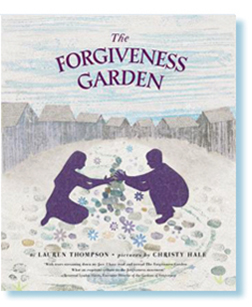 Nov. 29, 2012 Kuala Lumpur’s famous Petronas twin towers will now always look like ‘stacking cups’ to me, the Guggenheim Museum in New York upside down stacking rings, and Tokyo’s Yoyogi National Stadium a cozy fort “blankets flung, stretched chair to chair”…As I close the picture book “Dreaming Up: A Celebration of Building,” brought to life by author and illustrator Christy Hale, I realize the adage holds true…“once you have seen, you can’t unsee.”
Nov. 29, 2012 Kuala Lumpur’s famous Petronas twin towers will now always look like ‘stacking cups’ to me, the Guggenheim Museum in New York upside down stacking rings, and Tokyo’s Yoyogi National Stadium a cozy fort “blankets flung, stretched chair to chair”…As I close the picture book “Dreaming Up: A Celebration of Building,” brought to life by author and illustrator Christy Hale, I realize the adage holds true…“once you have seen, you can’t unsee.”
For years I’ve used those words to reflect on media literacy, critical thinking and acquired knowledge…but this time it’s a literal twist. I simply can’t ‘unsee’ these spectacular world class landmarks without viewing through the imaginative lens of Christy Hale reflecting on the purposeful work of a child at play.
Like a photographer who snaps a split second moment in stop motion time, Christy’s warm, richly textured illustrations spontaneously capture the art of play whether in pensiveness mid-build, collaborative chats among playmates or intense inspection with furrowed brow like a child deciding which wood block to pull out of a Jenga game.
I love this picture book on so many levels, as it packs an intellectual punch with purity and purpose that doesn’t need many words to convey.
Some might see it as a way to ‘seed’ early curiosity for turning tykes into engineers and seamlessly integrating STEM early on…But to me it’s building something much bigger—An acknowledgment that the raw simplicity of play builds the utmost monumental achievement: Imagination.
Christy Hale’s beautifully illustrated scenarios lend authenticity and lifelike motion to a candid peek into the art of play, as if we readers are being let in to the secret world of children doing what they do best, hanging shapes in the air, balancing cards, propping pillows into forts…Then voila!
…On the adjacent page, we see a full color photo of an architectural landmark like London’s Sclera Pavilion that could’ve easily sprung from the glue-n-popsicle stick prototypes of ‘minds under construction.’
Once you connect the two, they’re enmeshed…it’s hard to ‘unsee’ the powerful potential of brains at play (which is after all, children’s ‘work’ to make sense of the world!)
At the back of Dreaming Up, readers get the ‘reveal’ with a full list of the buildings and location specifics, a blurb about the architects who designed them and a creative quote about their vision.
Box House, by Maya Lin in the Rocky Mountains, Telluride, Colorado
Christy Hale’s site itself houses teaching resources, art activities and downloadable lessons that any parent, scout troop or book club can use as springboards to inspiration. She’s passionate about tactile play and turning the free form use of art scraps and recyclables into new creations, and generously accompanies her titles with hands-on art projects for kids to express and interpret her own work.
Using a visual lens for problem solving
 The lens she draws upon in this book of visualization has a personal deja vu appeal to me harkening back to my middle school years when I wrote my very first children’s book Tommy in Numberland, about a kindergarten child who had trouble in math.
The lens she draws upon in this book of visualization has a personal deja vu appeal to me harkening back to my middle school years when I wrote my very first children’s book Tommy in Numberland, about a kindergarten child who had trouble in math.
Dreaming Up would’ve been a much better name for my own little book decades ago, as it was about a boy who was outcast for being ‘behind’ in learning to count, and went to sleep stressed about learning his numbers, only to dream turned common household toys and neighborhood objects into numeric visuals by shape: His little brother’s ducky became an obvious number two, the sail on his toy boat was a 4, the oval bamboo swinging porch chair was a 6 and so on…until he ended up teaching himself numbers through familiar objects, acing his test by making math more approachable and less sterile.
I remember that transformative moment when the 8th grade teacher pulled me aside and said,
“You should really publish this! It’s a creative way of problem-solving and makes me really think you’re destined to be a writer someday.” Go figure.
When she asked me how I came up with the idea of associating visuals with problem-solving, I remember saying, “I dunno; I was just playing around with it.”
Play. That serious work of children that turns doodles and daydreams into innovation through imagination…
 I’ve written a lot about the necessity of play over the last few years, especially open-ended, “make something out of nothing” type of play, rather than the overly prompted, packaged, pre-fab and performance-driven items that resemble play, but are often more about assembly and instruction than free form interpretation in an artistic expression of form and function.
I’ve written a lot about the necessity of play over the last few years, especially open-ended, “make something out of nothing” type of play, rather than the overly prompted, packaged, pre-fab and performance-driven items that resemble play, but are often more about assembly and instruction than free form interpretation in an artistic expression of form and function.
It’s so imperative that we build on brain plasticity and possibility rather than pigeon-hole kids into formulaic ‘flap a in flap b assembly’ models, as I wrote here in this piece about the neuroscience and necessity to unpack the loaded Lego commercialization opportunities over brick and build creativity and ideation.
From Lego bricks to 21st century STEM innovation stations like GoldiBlox, Little Bits, Roominate, Galaxy Goo and other tactile tidbits of art meets science that enhance the notion of ‘makers’ versus ‘assemblers’ the power of play to transform and guide children with open-ended possibility echo the very notion of Dr. Stuart Brown’s excellent book, Play, and the National Institute for Play as well as the Institute of Play in all its various imaginative forms.
Going ‘back’ to the future: New ways of seeing with a blank canvas
Like Christy Hale’s art workshops and interpretive activities, (that’s Christy at left guiding one of her art sessions with kids to accompany “Our School Garden” published by Readers to Eaters, another one of her new books for 2012!) there’s a welcome return to “making” as we’ve seen in the escalating numbers at Maker Faire’s international expansion attracting far more than an Etsy/eco techno tribe.
The recent video of the preschool teacher who removed all the toys from the classroom and replaced them with cardboard boxes is an homage to this type of free form ‘case for make-believe’ to leave it open-ended and see what springs forth from humble beginnings.
Not saying old recycled cardboard is a new ‘classroom model’ for early childhood education (nor am I slamming tech devices by any means Maker Faire is all about the morphing of art and science and tech innovation!) it’s just fabulous to see the return of a blank ‘tablet’ to create and build upon using one’s own imagination.
Similarly, Caines Arcade and the Imagination Foundation have been making the rounds in the media for building workable cardboard games using ‘less is more’ notions of a return to the very raw roots of play and creativity as a learning tool.
 Much like we strive to get media literacy and critical thinking into the mix early on, the arts linkage to creative problem-solving is starting to get much needed attention to be integrated into the very DNA of education to engage multiple intelligences with experiential learning.
Much like we strive to get media literacy and critical thinking into the mix early on, the arts linkage to creative problem-solving is starting to get much needed attention to be integrated into the very DNA of education to engage multiple intelligences with experiential learning.
It’s noteworthy that 85% of college educated professionals feel creative thinking is critical for problem solving in their career, and 71% feel it should be taught as a class, like math and science. (Adobe survey of 1000, great infographic on the necessity of creativity in education)
Meanwhile, this Edweek article champions the arts as essentials, gaining ground with what’s becoming known as a movement towards “A+ schools” seeing through the lens of ‘what could be’ after the arts were mercilessly whacked along with kinetics/PE/Recess in many schools. (great example of dance, mathematics in the Oklahoma and North Carolina systems, also noting drama, dance, music, visual arts, and writing, integrated across curriculum, valued as “essential to learning.”)
The zeitgeist IS shifting, as educrats start to ‘get it’ that physical and mental pursuits go hand in hand with amping up learning success, and sustainable retention…now that the almighty ‘test score and grades’ focus is reflecting this development, it’s just a shame kids keep being used as guinea pigs for ‘what works and what doesn’t’ leaving gaping holes and ‘oopsie’ moments when funding goes by the wayside only to be brought back with evidentiary clarity. Better late than never I suppose.
Dreaming Up: More Christy Hale Creativity
This past spring I was able to share an hour or so chatting with Christy Hale in person when she was kind enough to host the art activity at our local screening of Consuming Kids at the Reach and Teach bookstore.
She shared some of her thoughts about her 2012 books beforeDreaming Up came out.
Newly released just weeks ago published by Lee and Low (a highly recommended indie treasure trove of diversity and multicultural offerings worthy of a long post in itself!) Dreaming Up has already garnered solid reviews (including the coveted Kirkus star).
Christy said,
“It’s been a busy year…I’ve got three books I’m involved with…Our School Garden has been rewarding—we’re seeing more schools start to plant their own gardens for hands-on learning lessons from health sciences and nutrition to integrating art like we’re doing here today.” (see aligned design your own seed packet art activity, we created ‘paper gardens’ out of recycled art scraps)
“Dreaming Up is concrete poetry. The juxtaposition of children’s construction and the expression of world class architects come together as one…the abstract meets physical.”
“It became a fun challenge to think of the many ways kids create and build…and then try to match my own vision of buildings that correspond with that type of play. I’m both the author and illustrator of Dreaming Up…so it’s definitely my interpretation…You’ll see pillow forts reflected in Frank Gehry’s Guggenheim Museum of Spain; Maya Lin’s Telluride Colorado architecture reminded me of a refrigerator box…it’s all about associating play with creativity and thinking through a child’s eye view.”
Dreaming Up may very well be one of my favorite finds this year for kids.
It definitely should be in every “art as play and play as art venue” from museums like MOMA and The Tech to The Institute of Play…
Her inspiration for the concept came from her first encounter with La Sagrada Familia in Barcelona, (the grand basilica conjures visions of an ornate sandcastle with spires piercing skyward) where she started thinking about the many translations of beauty and play…
Dreaming Up isn’t her first author/illustrator combo though, that honor goes to her Kirkus Review starred biography called The East West House: Noguchi’s Childhood rated ‘Best Book of the Year’ in 2009. Quite an authorial debut to add to her gazillion accolades as an art educator and award-winning illustrator!
“My other big project releasing about the same time in 2012 is called The Forgiveness Garden about conflict, resolution and someone making the first step to put an end to violence…It’s both timely and timeless, originally based on the garden of forgiveness in Lebanon, but a universal theme.”
Lauren Thompson wrote The Forgiveness Garden and Christy Hale illustrated this newly released gift to the marketplace…
It’s poignantly relevant with today’s current affairs and media headline news which our friends at Reach and Teach have captured well in this hot off the press review.
Here’s a snippet from Reach and Teach co-founders Craig Wiesner and Derrick Kikuchi:
“We all need tools to help us realize when enough is enough, to stop the cycle of retribution, and to begin the path to forgiveness and this book will help pave the road towards, we hope, many people learning that important lesson. Kirkus Reviews shared that the names of the two villages in the story were “cleverly based on” the Sanskrit words for “us” and “them.” The story is somewhat universal, two groups of people hate each other, probably not even remembering why the feud started, but it goes on and on and on. Things happen and hate continues. Someone gets hurt and someone else demands revenge. But the author adds some important questions to this tale of eventual forgiveness”…(continued on Reach and Teach)
Finally, unlike some artists who have a singular signature ‘look’ or type of expression, Christy Hale’s versatility is as diverse as her colorful multicultural creations.
She isn’t tidily classified or pigeon-holed, and that makes her expression through her work all the more authentic, as it seems like she’s on a constant quest to stretch herself and play with her own artistic interpretations to self-challenge.
Her wide range of styles, from watercolor and collage to printed woodgrain patterns and elaborate textures span a long career as an art director, author-illustrator, designer and educator which we used to call having ‘massive range’ when I was reviewing portfolios as a creative director/copywriter.
This quote that I found on her site sums my own worldview of what Dreaming Up represents in terms of the art of play and problem-solving:
“I don’t see art as separate from other subject matters. It relates to everything. It is a way of understanding other cultures and moments in time when verbal language isn’t easily decoded. I believe everyone can develop visual language abilities, both skills of interpretation and skills to communicate in visual language. I need to draw when I want to explain something—to show when I can’t tell. Nothing extends time, let’s me live in the moment, and empowers me, like working with my hands in visual problem solving. There are different kinds of intelligence of the brain, and it’s essential to give full expression to all of them for whole human beings.–Christy Hale”
As Plato once said “You can discover more about a person in an hour of play than in a year of conversation.”
I think the hour of play I had with Christy Hale gave me insights I’ll carry through to my work with kids for years.
Definitely deserves a ‘positive pick’ in our Shaping Youth open call for media that matters. All hail, Christy Hale.
Related Reading About Play by Amy Jussel, on Shaping Youth
If Kids Could Be Dolphins: The Power of Creative Play
Seeding Green With Richard Louv
Media Savvy Kids and Nature Deficit Disorder
The Nature of Tweens: Wired Worlds & Outdoor Ed
Shaping Youth Through Nature, Media Unplugged
Can Somethin’ Be Done About All This Consumption?
Power of Play Series: Innovations in Getting Active Pt1
Power of Play: Tag-Teaming Innovation to Get Kids Moving Pt2
Power of Play Series: Active Video Games in Schools Pt3
The Value of Unstructured Play
The Case for Make-Believe Part One
Defending Pretending: The Need for Prominent Play: Part 2
Generation Digital MIT Review & Six Degress of Susan Linn
What do children build when a preschool teacher removes all the toys and leaves only cardboard boxes?
Imagination. Where curiosity meets collaborative fun. A kidvid worth pondering:










I’m really amazed at the variety of styles Christy uses in her books. You’re right that illustrators usually have a very specific style, but Christy seems very flexible, modifying her style based on what she’s trying to help communicate.
I love Dreaming Up!
Growing up, my father always stopped dead in his tracks when he spotted some new building, or house, or other structure that included something different than the usual. I picked up that love for structures (it drives Derrick crazy sometimes when I too stop dead in my tracks and stare) from my father. Dreaming Up really made me stop, and stop, and stop, and stop….. I think it will inspire a lot of creativity in children and also help them become much more aware of the structures around them, hopefully getting the more “device” oriented kids to stop and look around them a little more.
Agree, her range is grand…and yep, the book goes way beyond any STEM/subliminal message…really gets into seeing the connection and interdependence of art, play and learning universally.
Now I wish we could get a series of nature and play power focused on integration of online to OFF line exploration…Like SCI Spy and other kids apps of the digital gen to start ‘studying’ with grand inquisition the basic joys of all creatures great and small…
Strongly feel app creators could be doing amazing things to reconnect kids with free play and nature to bring more balance…art and learning via tactile (Our School Garden, etc) is only one small avenue of expression, and it feels like we really need to ‘use it or lose it’ in building an appreciation for the earth in order to preserve it! (yes, you can tell, I’m a huge Rich Louv fan)